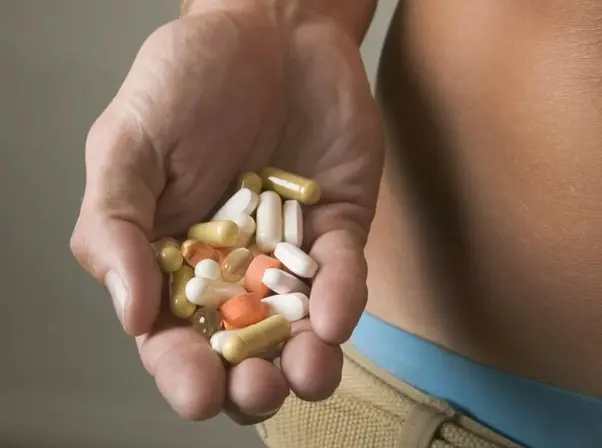RAD 140, also known as Testolone, is a selective androgen receptor modulator (SARM) that has gained attention for its potential to mimic the effects of testosterone. Developed initially for its possible benefits in treating conditions like muscle wasting and breast cancer, RAD 140 is often considered a safer alternative to traditional anabolic steroids by those in the bodybuilding community due to its selective action.
Despite its popularity and RAD 140 side effects and risks – users and researchers alike have noted various adverse effects that may accompany the use of this SARM. It is crucial to understand the implications of these side effects and to weigh them against the potential benefits RAD 140 may offer. As with any supplement or drug, adherence to usage guidelines and an understanding of the substance’s research and legitimacy are essential for safe application.
Quick Summary
- RAD 140 is associated with both therapeutic potential and off-label use for performance enhancement.
- Understanding the side effects and risks is necessary when considering the use of RAD 140.
- Adhering to usage guidelines is important for the safe application of RAD 140.
What Is RAD 140

RAD 140 is a type of Selective Androgen Receptor Modulator (SARM) under investigation for potential therapeutic applications. It is designed to mimic the effects of anabolic steroids with improved selectivity.
Scientific Profile of RAD 140
RAD 140, also known as Testolone, targets selective tissues in the body. It has a unique chemical structure that allows it to selectively stimulate androgen receptors in muscle and bone tissues. Key Attributes of RAD 140:
- Selectivity: Targets muscle and bone receptors
- Anabolic Effects: Promotes muscle growth similar to anabolic steroids, but with less impact on other organs
Legality and FDA Status
RAD 140 is not approved by the Food and Drug Administration (FDA) for any medical use in the United States. The substance exists in a regulatory gray area in terms of legality:
- Prescriptions: Not legal without a prescription, which isn’t given as it’s not FDA-approved
- Sales/Distribution: Illegal for human consumption; legally sold for “research purposes”
Comparison with Traditional Anabolic Steroids
RAD 140 is compared to traditional anabolic steroids due to their shared aim of muscle growth enhancement.
| AspectRAD 140Traditional Anabolic Steroids | ||
|---|---|---|
| Receptor Selectivity | High | Low to moderate |
| Anabolic to Androgenic Ratio | Higher | Lower |
| Legality | Not FDA-approved | Varies; some are FDA-approved |
| Associated Side Effects | Fewer reported | More reported |
RAD 140 and traditional anabolic steroids both increase muscle mass, but RAD 140 is reputed to have a higher selectivity for muscle and bone tissues.
References
Benefits of RAD 140

RAD 140, known as Testolone, is a selective androgen receptor modulator (SARM) that has become popular for its potential to promote muscle growth and strength without the typical side effects associated with anabolic steroids. Here’s how it may impact various aspects of physical fitness:
Muscle Growth and Strength Gains
Research suggests that RAD 140 can significantly enhance muscle growth and strength gains. It is believed to bind selectively to androgen receptors in muscle tissues, potentially increasing muscle size and strength. A study demonstrated that RAD 140 increases lean muscle mass, which could be beneficial for those looking to improve their physique.
Fat Loss and Lean Mass Efficiency
Users of RAD 140 report that it assists in promoting fat loss while preserving or even increasing lean mass. This substance may boost metabolism and energy expenditure, facilitating a reduction in body fat and an increase in lean muscle tissue. This characteristic is particularly appealing for athletes and bodybuilders seeking enhanced physique with pronounced vascularity.
Improved Bone Density and Recovery
RAD 140 is also associated with benefits related to bone density and recovery. By mimicking the effects of testosterone, it can offer support for bones, potentially reducing the risk of fractures. Furthermore, RAD 140 may aid the body’s recovery processes after exercise by impacting muscle and bone tissues, leading to improved endurance and strength over time. This is crucial for athletes who need to recover quickly to maintain consistent training.
References
https://pubmed.ncbi.nlm.nih.gov/24189892/
https://pubmed.ncbi.nlm.nih.gov/24428527/
RAD 140 Side Effects and Risks

RAD 140, also known as Testolone, is associated with a range of potential side effects and health risks that users should consider. While it is often promoted for its muscle-building capabilities, the risks can impact several bodily systems.
Endocrine Disruption and Hormonal Imbalance
RAD 140 can disrupt the endocrine system, leading to testosterone suppression. This can result in:
- Decreased libido
- Mood changes
Extended use of RAD 140 may necessitate a post-cycle therapy to normalize hormone levels. Some individuals might experience gynecomastia due to hormonal imbalances, characterized by the enlargement of breast tissue in men.
Liver Toxicity and Cardiovascular Issues
This compound’s impact on liver function is a serious concern. Reports of liver toxicity have been associated with RAD 140 use. Key indicators include:
- Elevated liver enzymes
- Potential for liver injury
In addition to liver health, there may be cardiovascular concerns. These can manifest as:
- Altered cholesterol levels
- Increased blood pressure
These cardiovascular issues may enhance the risk of heart-related conditions.
Other Adverse Effects
Users may also experience a variety of other side effects, such as:
- Hair loss: An androgenic side effect that can occur due to RAD 140’s interaction with hair follicle receptors.
- Water retention: Leading to a bloated appearance and at times, discomfort.
- Acne: Another androgenic side effect, typically due to the substance influencing sebaceous gland activity.
Careful monitoring and discretion are advised when considering the use of RAD 140 due to these potential adverse effects.
References
- RAD 140: A Safer Alternative to Steroid Use?” Pubmed. https://pubmed.ncbi.nlm.nih.gov/29537373/
- “Anabolic effects of RAD 140 in lean body mass without steroid-like side effects.” National Institutes of Health. https://www.nih.gov/
- “Selective androgen receptor modulators and their effects on muscle and bone: Future or fallacy?” Pubmed Central. https://www.ncbi.nlm.nih.gov/pmc/articles/PMC4018048/
RAD 140 Usage and Guidelines

RAD-140, a Selective Androgen Receptor Modulator (SARM), is utilized for both bulking and cutting cycles by individuals seeking muscle-building benefits without the traditional side effects of anabolic steroids.
Dosage and Cycles
When administering RAD-140, dosages and cycle lengths can vary depending on the individual’s experience with SARMs and their specific fitness goals. The recommended dosing range for RAD-140 typically falls between 5 mg and 20 mg per day. Novices often start at the lower end to gauge their tolerance, while more experienced users may opt for higher doses. Cycles usually last 6 to 8 weeks for beginners, extending up to 10 weeks for advanced users.
- Beginners: 5-10 mg/day for 6-8 weeks
- Intermediate: 10-15 mg/day for 8-10 weeks
- Advanced: 15-20 mg/day for 8-10 weeks
It’s vital to keep in mind that RAD-140 has a half-life of approximately 16 hours, requiring daily dosing to maintain consistent levels in the bloodstream. Administration is typically oral.
Post Cycle Therapy
Post Cycle Therapy (PCT) is a crucial aspect of any SARM cycle, including RAD-140, aimed at normalizing hormonal levels following the cessation of the cycle. PCT usually involves the use of medications such as Clomid (Clomiphene Citrate) and Nolvadex (Tamoxifen Citrate) to stimulate natural testosterone production. PCT typically begins 1 to 2 weeks after the last dose of RAD-140 and can last between 4 to 6 weeks depending on the user’s specific hormonal recovery needs.
- PCT initiation: 1-2 weeks after last RAD-140 dose
- PCT duration: 4-6 weeks
Starting the PCT too early or too late can affect its efficacy, so timing is critical. Users should start PCT when RAD-140 is mostly cleared from the body but before the body shows significant signs of testosterone suppression.
Table: Common PCT Protocol
| Week | Clomid | Nolvadex |
|---|---|---|
| 1-2 | 50 mg/day | 40 mg/day |
| 3-4 | 25 mg/day | 20 mg/day |
| 5-6 | Optional taper | Optional taper |
It’s essential to consider that while RAD-140 does not convert to estrogenic compounds, monitoring of estrogenic side effects is recommended due to the potential suppression of natural testosterone, which may indirectly affect estrogen levels. Therefore, additional supportive supplements or medications may be necessary depending on individual responses to the SARM cycle.
References
Research, Legitimacy, and Future Prospects

RAD 140, also known as Testolone, is a Selective Androgen Receptor Modulator (SARM) that has garnered attention in scientific and regulatory circles for its potential applications in medicine. The research landscape and the legitimacy of RAD 140 are evolving as clinical trials advance and regulatory bodies scrutinize its use.
Clinical Trials and Scientific Research
RAD 140 has undergone various stages of preclinical and early clinical research. Radius Health, the company that synthesized RAD 140, has been instrumental in pushing forward its development. To date, Testolone has been primarily studied for its potential to treat conditions like muscle wasting and breast cancer. However, as of the knowledge cutoff in 2023, RAD 140 has not received FDA approval and is still in the investigation stage. It’s important to note that its status can change based on new research outcomes.
- Preclinical studies: Indicate potential for muscle and bone anabolic effects.
- Current clinical trials: Aim to evaluate safety and efficacy in humans.
However, no large-scale, peer-reviewed, conclusive clinical trials have been published that confirm these findings in humans.
Regulatory Considerations
Regulatory views on RAD 140 are predicated on its status as a SARM and its lack of approval by regulatory health bodies like the FDA. The World Anti-Doping Agency (WADA) has identified RAD 140 as a prohibited substance for athletes due to its performance-enhancing potential.
- FDA Approval: Not granted as of the latest data.
- WADA status: Included in the annual Prohibited List.
The future prospects of RAD 140 lie in the outcome of ongoing research and the shifting regulatory landscape, which will determine its legitimacy and potential medical use.
Frequently Asked Questions

This section addresses common inquiries regarding the side effects and implications of RAD-140 use, with information grounded in available research.
What cardiovascular effects can occur from RAD-140 usage?
RAD-140 has been associated with an increased risk of cardiovascular events. Studies suggest that it can potentially lead to elevated blood pressure and changes in cholesterol levels, which are risk factors for heart disease.
Can RAD-140 usage lead to long-term health consequences?
Long-term health consequences of RAD-140 usage remain uncertain due to the compound’s relatively recent introduction and lack of extensive long-term studies. However, potential risks could include hormonal imbalances and organ stress.
What are the common side effects experienced by males using RAD-140?
Males using RAD-140 may experience side effects such as gynecomastia, hair loss, and mood swings. Additionally, a suppression of natural testosterone production can occur, necessitating post-cycle therapy.
How might RAD-140 influence mental cognition or brain function?
There is a paucity of solid evidence on the effects of RAD-140 on mental cognition or brain function. Preliminary studies suggest that while some users report improved focus and mood, others experience mood disturbances.
Is there a potential for liver toxicity when taking RAD-140?
RAD-140 can increase liver enzyme levels, indicative of liver strain. Although research is in the early stages, hepatotoxicity is a concern with the use of anabolic compounds, including RAD-140.
What positive effects can individuals expect when using RAD-140?
Individuals using RAD-140 can expect potential positive effects such as increased lean muscle mass, enhanced strength, and potential for fat loss. Yet, these effects should be weighed against the possible risks and side effects.
References
Source: Journal of Cachexia, Sarcopenia and Muscle
Source: Hepatology
Source: Neurology
Source: Urology
Source: Endocrine Society
Dr. Grant Fourie, a specialist in male hormones, is based in Cape Town, South Africa. He provides comprehensive treatments for conditions related to low testosterone, such as erectile dysfunction, fatigue, and mood changes. His methods include hormone replacement therapy and other modern treatment options.
Contact me via email or phone to book personal appointment in my clinic: The Village Square, Cape Town - South Africa



